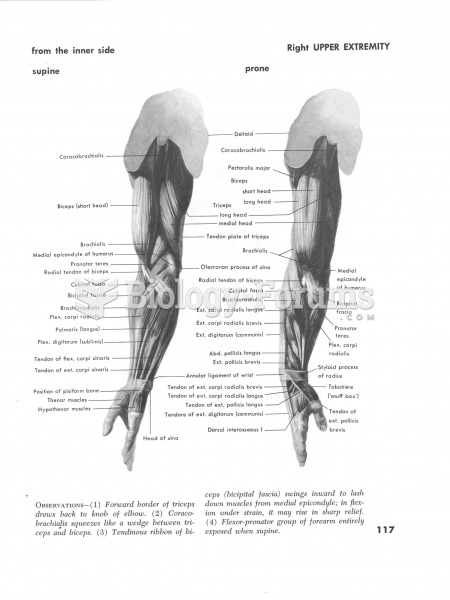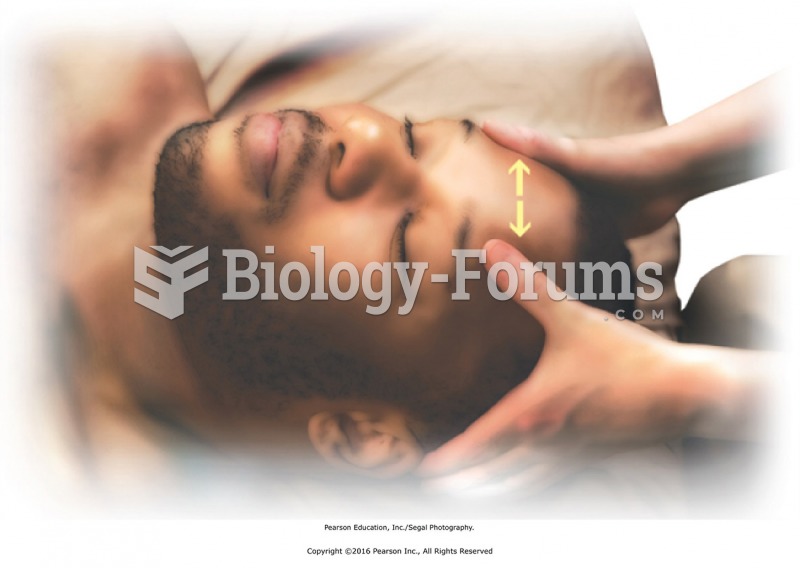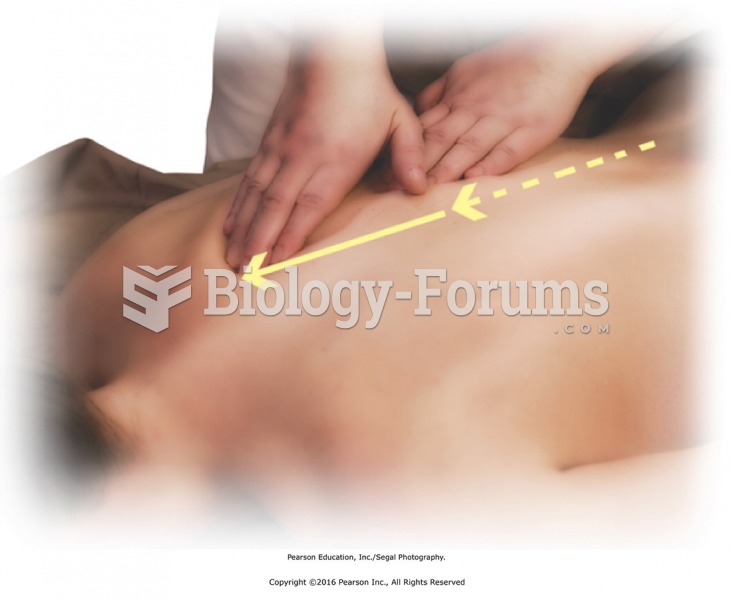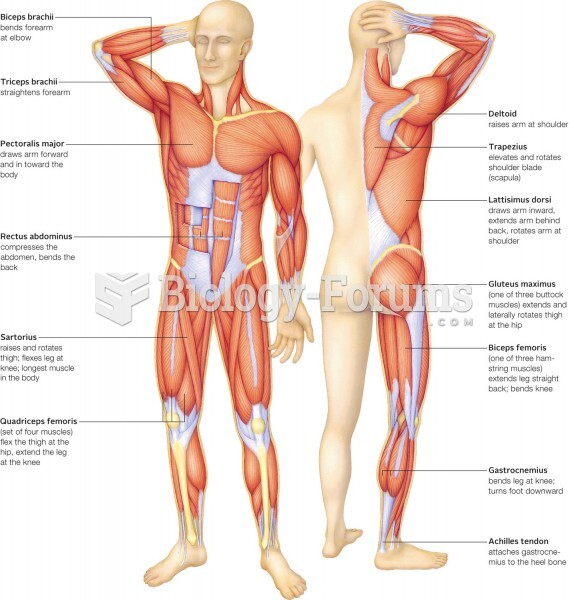|
|
|
Drying your hands with a paper towel will reduce the bacterial count on your hands by 45–60%.
The Centers for Disease Control and Prevention has released reports detailing the deaths of infants (younger than 1 year of age) who died after being given cold and cough medications. This underscores the importance of educating parents that children younger than 2 years of age should never be given over-the-counter cold and cough medications without consulting their physicians.
Calcitonin is a naturally occurring hormone. In women who are at least 5 years beyond menopause, it slows bone loss and increases spinal bone density.
Vaccines prevent between 2.5 and 4 million deaths every year.
Illicit drug use costs the United States approximately $181 billion every year.







